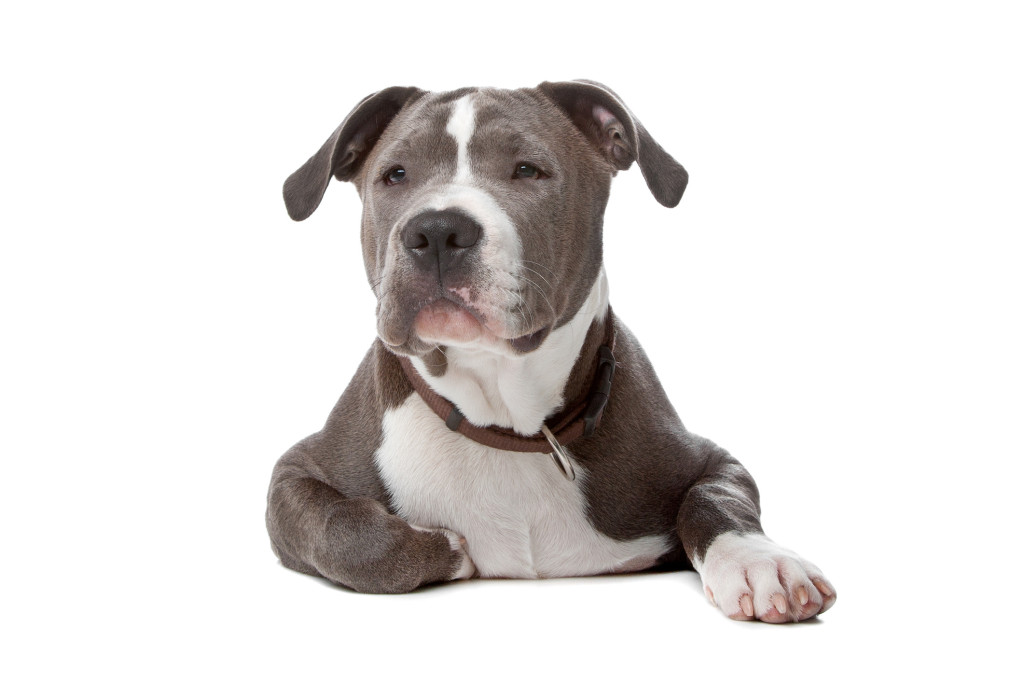Using the Colorado protocol for canine parvovirus | Dr. Justine Lee, DACVECC, DABT, Board-Certified Veterinary Specialist
Having practiced veterinary medicine in several urban environments (e.g., Boston, Philly, Minneapolis-St. Paul), I’ve learned how to practice street medicine. What does that mean?
It means that, as a veterinary specialist in emergency critical care, I always try to work with pet owners as best I can when they have financial limitations. While the ideal treatment – or what I call the “Gold standard” – is often best and results in the quickest return to normal health, this isn’t always financial available for pet owners. As a result, other options have to be considered to help save a dog or cat’s life. Classic example? Canine parvovirus, or what is commonly called “parvo.”
Canine parvovirus is a highly infectious disease that can result in severe dehydration, hypoglycemia (e.g., low blood sugar), vomiting, bloody diarrhea, nausea, and death without treatment. While this disease is completely preventable with vaccination, it is often seen in dogs that are unvaccinated, who haven’t undergone a full puppy vaccine series, who’s mothers weren’t vaccinated, or high stress (e.g., transporting animal rescue dogs), etc.
Signs of parvovirus include:
- Drooling
- Not eating
- Vomiting
- Diarrhea
- Bloody diarrhea
- Lethargy
- Not moving
- Trembling
- Weakness
- Painful abdomen
- Bloated abdomen
- Foul smell
- Dehydration
- Death
Treatment includes the following:
- Fluid therapy (ideally intravenously or “IV”)
- Anti-vomiting medication (e.g., Cerenia/maropitant)
- Antibiotics
- Blood work monitoring
- Anti-diarrheal medications
- Nutritional support
- Supportive care (e.g., including temperature monitoring, thermoregulation, etc.)
Unfortunately, most dogs need to be hospitalized for 3-5 days, depending on how they respond to therapy. This can often be several thousands of dollars, especially if your puppy requires 24-hour care.
As a result, I’m often asked to treat parvovirus patients with the “Colorado protocol.” What is this? This is an “outpatient” protocol for parvovirus. This is based on a recent veterinary scientific paper published out of Colorado State University (CSU) veterinary school called “Evaluation of an outpatient protocol in the treatment of canine parvoviral enteritis”; this paper was published in the journal of Veterinary Emergency Critical Care about an “outpatient” canine parvovirus treatment. Does this exist and why aren’t more veterinarians offering this?
While this study stated that it was an assessment out an outpatient protocol for dogs with parvovirus, it was a modified one. The outpatient patients were still hospitalized in a 24-hour facility but treated with outpatient medications (e.g., they were not treated with IV fluids, but still hospitalized). These outpatient puppies did have 24-hour care, but have their IV catheter removed a few hours after they were initially stabilized on presentation. For this reason, it’s important that the details of the study results be interpreted carefully.
In this study, a total of 40 puppies were hospitalized, with 20 dogs being treated as in-hospital patients with IV fluids, IV antivomiting medication, antibiotics, syringe feedings, and supportive care. The other 20 puppies were treated as “outpatient” but were still hospitalized for monitoring in a cage. Again, these outpatients initially had IV catheters placed for IV fluid resuscitation and blood glucose/electrolyte stabilization first, and then had the IV catheter removed a few hours later (This was to mimic if they went home with a pet owner). Then, CSU began injections that a pet owner could potentially be taught to do at home. The “outpatient dogs” were still hospitalized for an average of 3.8 days prior to a a true outpatient therapy. In other words, dogs had to be stabilized first, rehydrated, and have their blood sugar and and electrolytes (salt balance) corrected first. They also had to be started on strong anti-vomiting medications (e.g., Cerenia/maropitant) first to make sure that the puppies could hold down food and water, and that their nausea was controlled well first. What does this “outpatient hospitalization” mean? If you’re a pet owner trying this protocol at home, you likely need to treat a sick parvo puppy for at least 3-5 days at home AFTER initial stabilization by your veterinarian!
In this study, both in-hospital and “modified outpatient” puppies received IV fluids, correction of blood sugar, and initial stabilization. Dogs were also treated with antibiotics (e.g., cefoxitin), anti-vomiting medication (e.g., maropitant), and supportive care. For those dogs that were then treated “outpatient” once stable, they received the following:
- Subcutaneous (SC) fluid (30 mL/kg q 6 h) (fluids under the skin)
- Maropitant (1 mg/kg SC q 24 h)
- Cefovecin (8 mg/kg SC once; this antibiotic lasts about 5-7 days in dogs as a one time injection)
- Syringe feeding canned Hills a/d food (1 ml/kg orally q 6 h)
Keep in mind that while the survival was good in both groups [90% (18/20) for the inpatient group compared to 80% (16/20) for the outpatient group], dogs need daily visits to the veterinarian to make sure they are still hydrated, doing well, and responding to outpatient therapy. And just in case I didn’t make myself clear with the bold italics above, critically ill dehydrated sick puppies must be hospitalized first initially to stabilize them before an outpatient protocol can be considered! My general philosophy is to recommend aggressive IV fluid stabilization for 12-24 hours and then try outpatient therapy thereafter at home if the patient is stable.
Personally, I would personally modify the CSU protocol to the following to require less “pokes” under the skin. I’d be much more aggressive with fluids because young puppies have a much higher fluid requirement (180 ml/kg/day). So personally I would do:
- Subcutaneous (SC) fluid (60 mL/kg q 8 h) (fluids under the skin)
- Maropitant (1 mg/kg SC q 24 h)
- Cefovecin (8 mg/kg SC once; this antibiotic lasts about 5-7 days in dogs as a one time injection)
- Syringe feeding canned Hills a/d food (1 ml/kg orally q 6 h)
- ONLY if the puppy doesn’t look nauseated (e.g., drooling)
- Metoclopramide (Reglan) (0.5-1 mg/kg orally every 6 hours, given 30 minutes prior to feeding)
- Daily visits to your veterinarian to recheck them
- Checking a temperature every 8 hours
- Nursing care (e.g., keeping the mouth and rectum clean, changing the puppy potty pads) every 6 hours
Most importantly, keep in mind that the ideal treatment truly is hospitalization with IV fluids for several days. That said, if you can’t afford this treatment, work with your veterinarian as best you can to provide care at home. I personally hate to see puppies die or euthanized for this treatable disease, but know that 1 out of every 5 puppies passes away from parvovirus, even with outpatient therapy. Do what you can to save them as long as they are not suffering or painful or uncomfortable at all!
Prevention
More importantly, make sure to prevent parvovirus! Vaccination is almost 100% effective in preventing puppies from getting parvovirus, but puppies must go through a full puppy series. If the mother was vaccinated prior to getting pregnant, she will pass on some maternity antibodies (protection) early in life, but these maternal antibodies drop by about 5-6 weeks. Hence, puppies need to be vaccinated starting around 6 weeks of age with one DHPP vaccine, with boosters every 3-4 weeks thereafter until 16-18 weeks of age (especially in high risk breeds like pit bulls, Rottweilers, Dobermans, Alaskan sled dogs, Labrador retrievers, etc.). Keep in mind that puppies are not fully protected against parvovirus until they have completed their full puppy SERIES – not just one vaccine!
Also, limit any doggie day cares, dog parks, etc. until your dog has had at least 3 vaccines – otherwise, there is risk of exposure! When in doubt, check with your veterinarian to help prevent this potentially deadly disease!
P.S. If your dog was diagnosed and treated for parvovirus, NO dog parks, walks outside of your property, etc. for at least 4-6 weeks. Please don’t spread this to other dogs! (You don’t want bad doggy Karma!)
References:
Evaluation of an outpatient protocol in the treatment of canine parvoviral enteritis. Venn EC, Preisner K, Boscan PL, Twedt DC, Sullivan LA. J Vet Emerg Crit Care 2017;27(1):52-65.



Comment
I have used a variation of this protocol successfully many times. It is best used in puppies very early in the disease, just stopped eating that day or vomiting that day. I add on famotidine and tramadol. I don’t syringe feed but offer food in small bites every few hours. This all works best in older larger breed puppies I find since they are less prone to hypoglycemia.
Paxxin and Vibactra Plus. They are natural, herbal health products from Amber NaturalZ. Using these two products I know many who have used this and their pups survived. In addition, I keep an eye on the gums to make sure they aren’t pale. If they become pale, I put a little pancake syrup on my finger and rub around the gums every 20 minutes until they are no longer pale. I check the hydration and have Pedialyte & homemade broth or store bought broth with no salt added. These have been successful in keeping the pups hydrated, put back in a little nutrients but more importantly electrolytes. These help to regulate the balance of fluids in the body, facilitating muscle contractions, and controlling pH balance in tissues. I don’t try to feed but have food available for when they are hungry. Cucumbers, apples, green tripe are special ‘treats’ I keep on hand for our pups. They will usually eat when they get hungry but as long as I’m able to constantly monitor their hydration and their gums, I feel confident about a successful, healthy pup. The Paxxin can be given often and looks like it supports all that the metoclopramide does. To me, and I am not a Veterinarian, the Vibactra Plus is way better than the cefovecin. The primary side effects of cefovecin are vomiting, diarrhea, lethargy and decreased appetite. Why would I take that chance? There are safer antibiotics out there but I just prefer using natural Vibactra Plus rather than chemicals. I just don’t understand, if Vet’s will do this Colorado Protocol, why won’t they offer this to their pet owners? I recently paid over $500 for x rays, blood work, exam, etc at the Vet’s. It was well worth it to me. But there is no way I could pay for Parvo or heartworm treatment at the Vets. I would love it if anyone else has used this and would share. Also, if Dr. Lee would explain why Vet’s won’t offer this, if only to the pet parents that cannot treat at a Vet.
Dr. Lee did explain – did you actually read the article? Immune system support is not the same as antibiotics; pale gums do not equate to hypoglycemia and aren’t cured by pancake syrup. Feeding when hungry is often too late. If you have parvo so often on your premises, it’s time to stop having puppies and unvaccinated dogs being made to suffer living there. Also one thing Dr. Lee didn’t specifically spell out – the protocol studied is not likely to save enough money for an owner to want to choose that in addition having to take a half to full week off of work to be their pup’s round-the-clock caregiver v. actual hospitalized care with a better prognosis.
Why the addition of Metoclopramide when you already have an anti-emetic on board?
B/C it’s the only one that is a pro-kinetic. The other anti-emetics have no pro-kinetic effect.
I have successfully treated with a modified version of this treatment protocol.
what were the modifications?
Using SQF, maropitant, Convenia, oral syringe feeding, oral dextrose/potassium supplementation vs. IV fluids and supportive care.